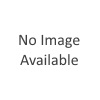 | Diqdiqqeh | DQ | Essentially a suburb of the ancient city, this area is located about 2 km to the northeast of the ziggurat of Ur. The precise extents of Diqdiqqeh were never defined, but Woolley referred to it as the low ground between the main railway line and the branch that went to Nasiriyeh. The train lines no longer run in the same place they did in Woolley's day, but Corona images allow us to recreate their paths. This makes the general boundaries west, south, and east somewhat known but how far it stretched north is not completely clear.
From the first season workers walking across this area picked up surface finds and brought them to Woolley. At that time the location did not have a fixed name in Woolley's mind and thus first season references sometimes say 'near the railway' or 'near Munshid's water engine.' In the second season Woolley decided to investigate more systematically, but after two days of excavation he decided there was not enough remaining architecture to reward further work. Instead, he continued to allow the workers to gather finds over the next ten seasons, and many later catalog cards state "brought in: Diqdiqqeh"
The finds from Diqdiqqeh indicate that the ancient suburb played a role in manufacturing and perhaps in commerce. Canals seem to have met in the area and boats may have unloaded goods here. Many figurines, tools, moulds and other crafting items are among the finds, suggesting that Diqdiqqeh may have been an industrial area away from the main habitation. The so-called Treasury of Sin-Iddinam was also excavated in this general area in season 5.
In the Antiquaries Journal of January 1925, Woolley described Diqdiqqeh as follows: A mile and a half NE. of the ziggurat, between the main railway line and the Nasiriyah branch, there is a patch of low-lying ground, occasionally cultivated, which the natives call Diqdiqqeh... a happy hunting-ground for treasure-seekers, and I took advantage of this fact to collect from the natives the scattered antiquities which they might bring to light. | (none) |

